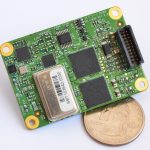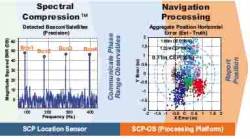On February 19th, the receiver successfully acquired and tracked signals from GPS and Galileo satellites in lunar orbit, at 63 Earth radii, approximately 401,814 kilometers from Earth.
LuGRE was developed in Italy by Qascom on behalf of the Italian Space Agency, in collaboration with NASA and scientific support from the Politecnico di Torino. The receiver is integrated into the commercial lander Blue Ghost 1, which Firefly Aerospace built in the United States as part of NASA’s Commercial Lunar Payload Services (CLPS) program.
The signal acquisition occurred in the L1/E1 and L5/E5 bands throughout the Blue Ghost 1 lander’s journey to the Moon. The most distant GNSS satellite signal received was from the Galileo constellation, at a distance of 67.79 Earth radii, about 432,384 kilometers from the LuGRE receiver.
This recent operation demonstrated that the receiver could use GNSS signals even near the Moon, where the lander orbited in low lunar orbit at a speed of approximately 1.66 kilometers per second.
Despite the significant distance and high speed, the position was calculated with very high accuracy, with an error margin of about 1.5 kilometers for position and about 2 meters per second for velocity. Signals were successfully acquired from four GPS satellites on the L1 and L5 frequencies and from one Galileo satellite on the E1-E5 frequency bands during a one-hour time window.
It also demonstrates the power of using multiple GNSS constellations together, such as GPS and Galileo, to perform navigation. After lunar landing, LuGRE will operate for 14 days and attempt to break another record – first reception of GNSS signals on the lunar surface.






